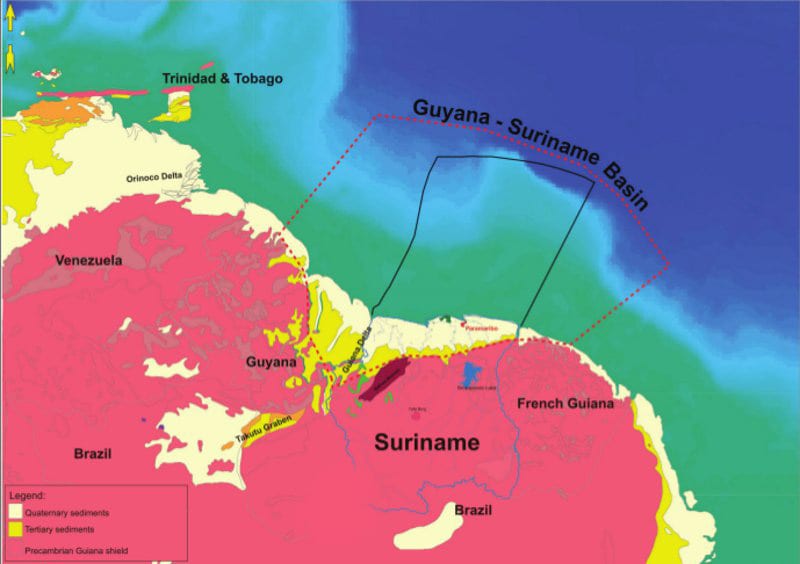It may be a far way off, but the Guyana government is setting the stage for the development of gas resources with Suriname, if the companies decide to go that way.
The latest development, in this regard, is a proposed law by the Guyana government that includes a framework for the unitisation of reserves across borders.
According to the draft Petroleum Activities Bill, if a reservoir in Guyana extends into a neighbouring country, the governments would meet to discuss the unitisation of the cross-border reservoir. The law would allow for limited information-sharing between governments, as is necessary to inform decision-making.
Guyana’s new model petroleum agreements, drafted to be consistent with the law, also speak to cross-border unitisation.
Guyana’s Vice President, Dr. Bharrat Jagdeo, alluded to this before. He said when Guyana concludes the offshore licensing round, it would start working on its gas strategy, including exploring the likelihood of joint development with Suriname. Block 58 offshore Suriname is where most of that country’s deepwater discoveries have been made. It borders the prolific ExxonMobil-operated Stabroek Block offshore Guyana.
Exxon has discovered 17 trillion cubic feet of gas in the Stabroek Block, with a lot of it concentrated near the border with Suriname. The Pluma and Haimara discoveries, for instance, are in gas fields. Similarly, the discoveries in Suriname’s Block 58 indicate large quantities of gas.
Though oil development is the clear priority of Exxon in Guyana, its President, Alistair Routledge, said earlier this year that the company is looking very closely at the potential for gas development. The unitisation provision is part of the suite of new measures proposed by the Guyana government as it moves to expand regulation of the oil and gas sector and modernise outdated oil laws. A two-week consultation period on the draft Bill began on June 20, 2023.



